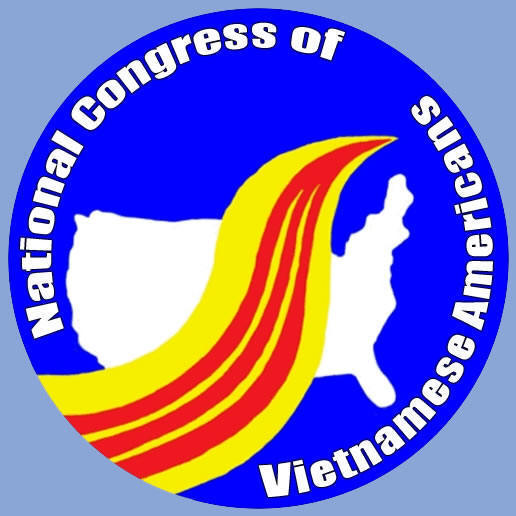APA OFFICE IN COMMONWEALTH OF
VIRGINIA
Why the Commonwealth Should Fund Efforts to
Assist Virginia’s Asian and Pacific American (APA) Communities
Virginia’s APA communities have difficulty accessing the Commonwealth’s services
and programs and lack representation in government to assist the communities.
I. Facts
- Virginia is one of "ten states with the
largest Asian populations in 2000"
- There are 309,886 APAs - 4.2%--in Virginia
(2003 Census Estimates)
- 47% Asians holding Bachelor's degree or
higher (2000 Census)
- In Virginia, there are 22,441 APA owned
firms that generate $4.4 billion in sales and receipts, creating jobs for
46,920 employees (1997 Economic Census)
- Median Income $55,699 APA vs. $43,318 for
all households (Census Aug 2004)
- 48% of foreign-born population from Asia are
naturalized U.S. citizens versus 37% of foreign-born population as a whole
- Foreign-born population constitutes 12% of
Commonwealth's civilian labor force and 44% of labor force growth over the
last decade (JLARC)
- 351,000 APA are military veterans (6.5%
foreign-born in VA are active duty Armed Forces (JLARC))
- 75% of APA men are age 16 and over, and 59%
of women are in the labor force
- 70% who are naturalized-citizen are
homeowners (57% of APAs who are born in U.S. are homeowners)
- From 1990 to 2000, the Asian population grew
72% compared to total population growth of 13%. APAs are the fastest growing
racial/ethnic group in the United States, and are expected to reach 8
percent of the
population by the year 2050. (Census)
- Despite the population size and tax
and revenue contribution to the Commonwealth, there are no APA state-elected
officials: this is a huge disparity of political under-representation.
II. Barriers Faced By Asian Pacific Americans
- Language barriers: 11% of Virginia residents
over age of 5 speaks a primary language other than English (2000 Census)
- Lack of health care: 33% of foreign born
APAs are not covered by health insurance compared to 13% of native-born
residents (Census CPS March 2002)
- Poverty: the poverty rate of APA families
(14 percent) is higher than that of non-Hispanic White families (8 percent)
- Health insurance: More APAs are lack health
insurance than the total U.S. population, with Korean Americans being the
most likely racial/ethnic group to be uninsured. An estimated 2 million APAs
are uninsured.
- Cultural & linguistic barriers: APAs face
tremendous cultural and linguistic barriers that impede access to health and
social services.
- Health Risk: APAs suffer disproportionately
higher rates of hepatitis B, diabetes, cancer and tuberculosis than the
general population.
- Lack of economic opportunity: according to
the Virginia disparity study, only 1.7 percent of total state procurement
dollars went to small and minority owned businesses. Taking out the
African-American share, about .4 percent of state procurement dollars went
to Asian and Hispanic owned businesses. Compare this number to Maryland,
which gave about 17 percent of state, contracts to small and minority owned
businesses.
- Criminal Justice: APA gang violence is
increasing in the Commonwealth. APA businesses are often the victims of gang
extortion and violence.
- Yet with all the unique barriers
facing the APA communities, there is a significant under-utilization of the
Commonwealth’s social, human and business services by the APA communities
- Moreover, the Commonwealth lacks the
language skills, cultural understanding and an outreach strategy to help the
APA community.
III. What Other Jurisdictions Have Done for
APA Communities
- Maryland created a permanent Governor’s
Office of APA Affairs in 1992 with a $110,000 budget and a staff to help APA
communities. This Office supports the MD APA commission, a 17 member
advisory group to the Governor.
- Maryland’s Montgomery County employs an APA
Outreach Director with direct policy and programmatic input to the Mayor of
Montgomery County and has a budget of nearly $90,000 to support salary and
activities to help APA communities.
- The District of Columbia set up a permanent
Asian American and Pacific Islander Office in 2001 with an initial $250,000
to pay for 3 staff and outreach activities, the office is budgeted for
$350,000 for 5 staff this year, and next year will be funded at $500,000 for
7 staff employees.
- There are 310,000 APAs in Virginia,
250,000 in Maryland, 20,000 APAs in D.C.; and APA population growth between
1999 and 2000 was 48% in D.C.; 73% in Maryland, and 95% in Virginia! Yet
Virginia has not provided any auspices to help provide service to or access
for the Commonwealth’s APA communities.
IV. What Virginia Needs to do to Help APA
Communities
The APA community is one of the most economically
productive communities in the Commonwealth. By helping APA families in need, we
ensure that the APA community remains a strong contributing part of the state.
- In order to:
- A. help APA communities access state
services
- B. help the Commonwealth outreach APA
communities
- C. help support the activities of the
Virginia Asian Advisory Board, a statutory community advisory body to
the State
- The State should appropriate $199,000 to:
- Provide staffing to assist the
Commonwealth’s APA communities: $105,000
- Help develop state policy and program
services for APA communities
- Pay for hourly services of state
translators to help APA constituents: $35,000
- Conduct research on the service needs of
APA communities: $20,000
- Provide a series of educational forums
on how to access state social, heath, education, and business services:
$6,000
- Help with the administrative costs, data
gathering and policy development effort of the Virginia Asian Advisory
Board: $15,000
- Collect, collate, analyze and store data
from all available state sources to help assess the needs of
Commonwealth APA communities and to make the data available to the
public and the Commonwealth: 18,000
|
|

